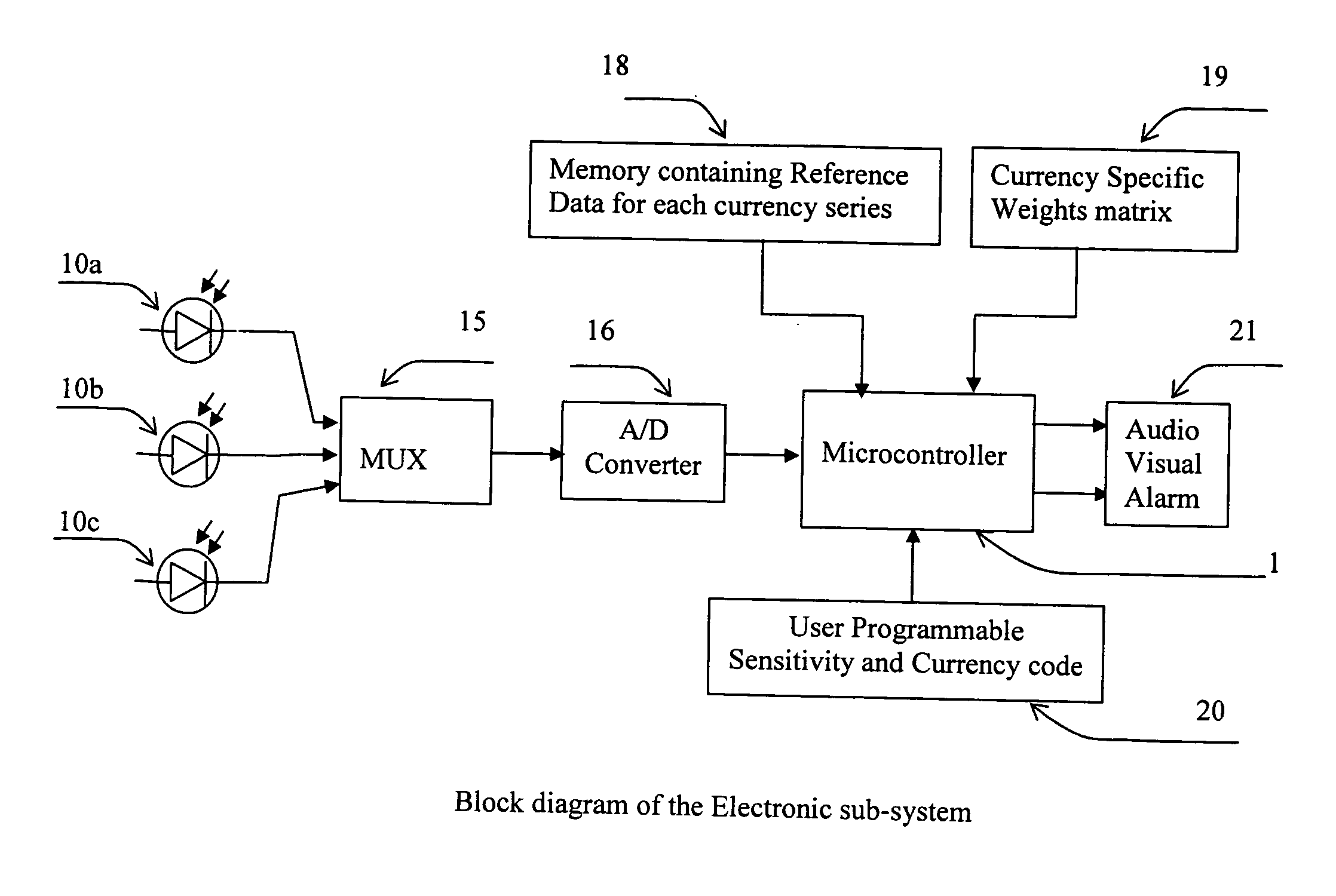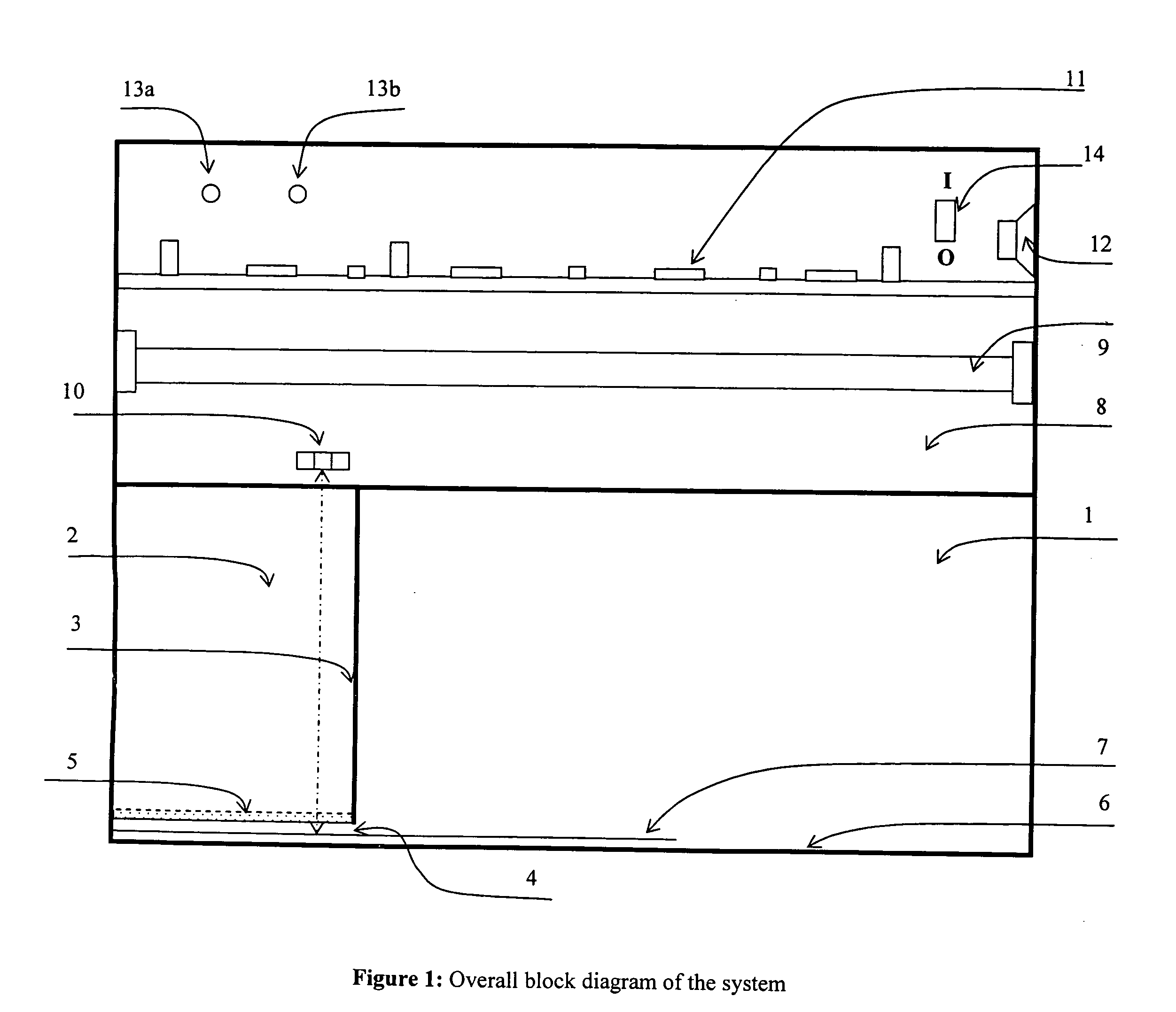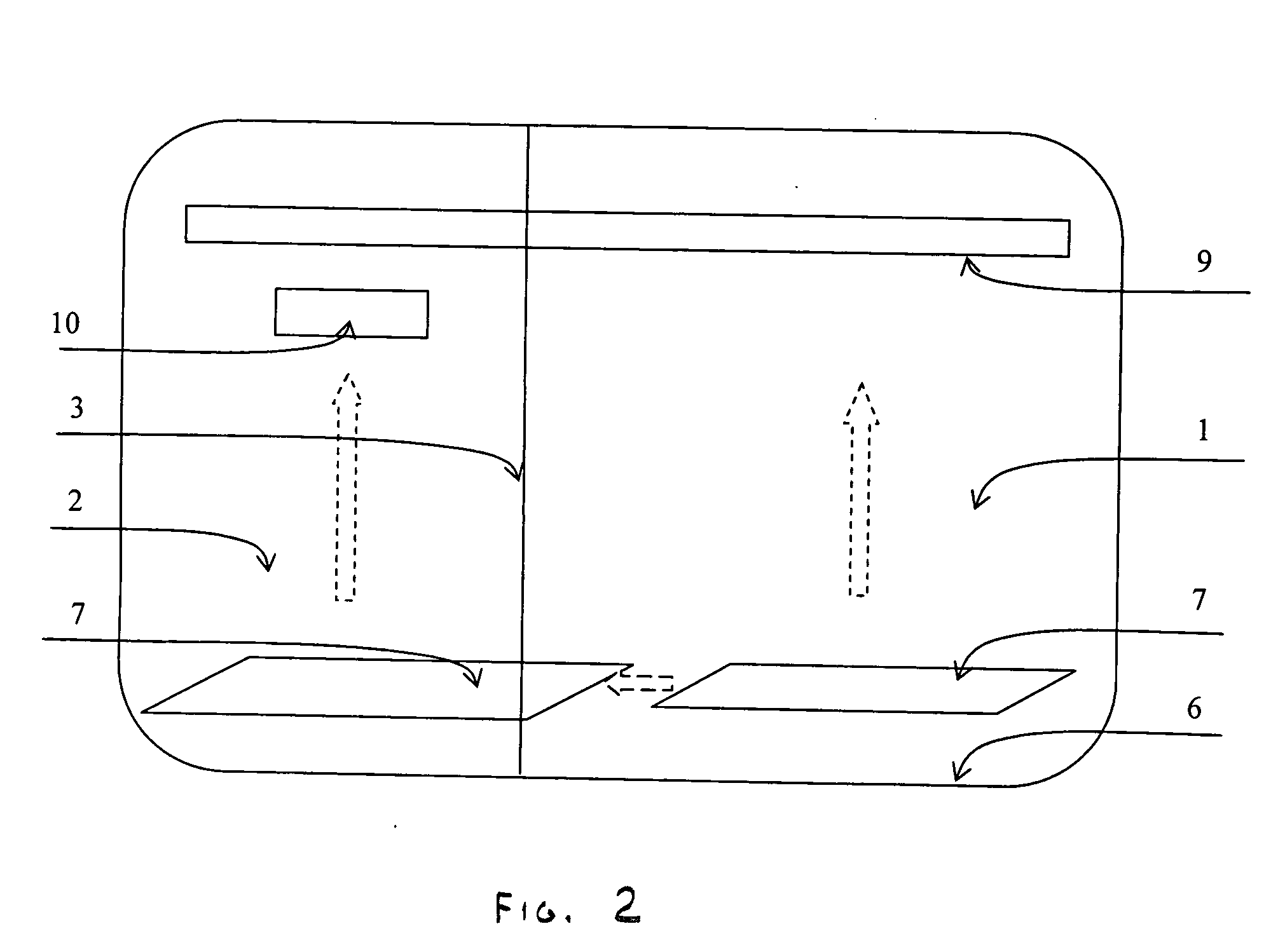Fake currency detector using visual and reflective spectral response
a spectral response and detector technology, applied in the field of fake currency detectors, can solve the problems of common limitations, unable to stock standard samples in the brain or physically corresponding currency notes of different denominations from various countries, and unable to yield misleading conclusions
- Summary
- Abstract
- Description
- Claims
- Application Information
AI Technical Summary
Benefits of technology
Problems solved by technology
Method used
Image
Examples
example 1
[0142] For experimental testing of the proposed apparatus, a fake Indian currency note of denomination value ‘A’ was checked under automatic detection mode. Table I shows, that the yellow and red band readings of the fake note were within the acceptable range, showing the note as genuine. However, blue band readings of the fake note clearly identified it to be fake. Visual assessment under UV light could not confirm its status as it was showing most fluorescence security features.
example 2
[0143] For experimental testing of the proposed apparatus, a fake Indian currency note of denomination value ‘B’ was checked under automatic detection mode. Table II shows that the blue and yellow band readings were out of the permissible range, while red band indicated genuineness. Visual assessment under UV light could not confirm its status as it was showing most fluorescence security features. The experiment shows that confirmation of at least two out of three readings is essential for currency verification particularly for cleverly counterfeit notes incorporating all UV visible security features.
example 3
[0144] For experimental testing of apparatus, a number of genuine Indian currency notes of denomination ‘A’, ‘B’, ‘C’ under moderate usage were verified. The results show that the “⅔ rule of acceptance” using the reference data given in Table I-III, identified all the notes as genuine. Visual inspection also confirmed the results.
PUM
 Login to View More
Login to View More Abstract
Description
Claims
Application Information
 Login to View More
Login to View More - R&D
- Intellectual Property
- Life Sciences
- Materials
- Tech Scout
- Unparalleled Data Quality
- Higher Quality Content
- 60% Fewer Hallucinations
Browse by: Latest US Patents, China's latest patents, Technical Efficacy Thesaurus, Application Domain, Technology Topic, Popular Technical Reports.
© 2025 PatSnap. All rights reserved.Legal|Privacy policy|Modern Slavery Act Transparency Statement|Sitemap|About US| Contact US: help@patsnap.com



